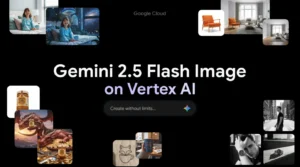9 Best AI-Powered Tools for AI Agents Collaboration Made Simple
Your AI agents are brilliant individually but terrible team players. This disconnect costs you time, money, and the competitive edge that comes from truly collaborative AI. Sarah, a project manager at a tech startup, watched her productivity soar 300% after implementing collaborative AI agents. “I went from managing chaos to orchestrating harmony,” she says. We’ve compiled the best AI-powered tools for AI agents collaboration that can deliver similar results. Ready to turn your AI agents into dream teams?
CrewAI
When it comes to multi-agent collaboration, CrewAI stands out as one of the most intuitive frameworks for building AI teams. This Python-based platform treats AI agents like specialized team members, each with defined roles and responsibilities.
Key Features
CrewAI excels at role-based agent orchestration. You can create a “researcher” agent that gathers data, a “writer” agent that crafts content, and a “reviewer” agent that ensures quality – all working together seamlessly. The platform handles intelligent task delegation automatically, so agents know when to collaborate and when to work independently.
The framework integrates beautifully with existing tools and APIs, making it easy to connect your AI agents to real-world data sources. Plus, its workflow management system ensures tasks flow smoothly from one agent to another without bottlenecks.
Pricing
CrewAI is completely free and open-source, which makes it incredibly accessible for developers and businesses of all sizes.
Pros and Cons
Pros:
- Excellent for specialized agent roles
- Strong community support
- Flexible tool integration
- Cost-effective (free)
Cons:
- Requires Python programming knowledge
- Can be complex for beginners
- Limited visual interface
Best For
CrewAI works best for development teams building custom AI workflows and businesses that need specialized agent collaboration for content creation, research, or data analysis.
AutoGen
Microsoft’s AutoGen brings enterprise-grade multi-agent conversation to the table. This framework focuses on structured dialogue between AI agents, making it perfect for complex problem-solving scenarios.
Key Features
AutoGen’s standout feature is its conversational AI architecture. Agents don’t just pass data back and forth – they actually discuss problems, ask clarifying questions, and build on each other’s insights. The platform supports both autonomous operation and human-in-the-loop configurations.
The framework includes auto-retry mechanisms and error handling, so your agent conversations stay productive even when things go wrong. It also offers role assignment capabilities that let you create specialized agent personas.
Pricing
AutoGen is open-source and free, though you’ll pay for the underlying AI model usage (like GPT-4 API calls).
Pros and Cons
Pros:
- Sophisticated conversation management
- Enterprise-ready architecture
- Flexible human oversight options
- Strong Microsoft ecosystem integration
Cons:
- Steep learning curve
- Requires technical expertise
- Higher API costs for complex conversations
Best For
AutoGen shines in enterprise environments where you need sophisticated AI collaboration for research, decision-making, or complex analytical tasks.
Useful Articles:
Zapier Agents
Zapier has evolved beyond simple automation into the realm of AI agent orchestration. Their new Agents feature (currently in beta) connects AI intelligence with their massive ecosystem of app integrations.
Key Features
Zapier Agents excel at cross-platform automation. An agent can monitor your calendar, research prospects on LinkedIn, summarize findings, and send personalized outreach emails – all without human intervention. The platform’s strength lies in its 7,000+ app integrations.
The no-code interface makes it accessible to non-technical users, while the trigger-action framework provides reliable automation patterns.
Pricing
Zapier’s pricing starts at $29.99/month for the Professional plan, with Agents features included. The free plan offers limited functionality with 100 tasks per month.
Pros and Cons
Pros:
- Massive app ecosystem
- No coding required
- Reliable automation
- Great for business workflows
Cons:
- Can get expensive with heavy usage
- Limited AI reasoning compared to other platforms
- Beta features may be unstable
Best For
Zapier Agents work perfectly for business teams who need AI agents to automate workflows across multiple software platforms without technical complexity.
Microsoft Semantic Kernel
Microsoft Semantic Kernel brings enterprise-grade AI orchestration with a focus on goal-oriented planning and secure integration.
Key Features
Semantic Kernel’s goal-oriented planning automatically breaks down complex requests into executable steps. The platform includes memory and context management, allowing agents to maintain state across interactions and improve their reasoning over time.
The framework supports multiple programming languages (C#, Python, Java) and includes enterprise security features like role-based access control and comprehensive logging.
Pricing
Semantic Kernel is free and open-source, with costs limited to your chosen AI model APIs.
Pros and Cons
Pros:
- Enterprise security features
- Multi-language support
- Sophisticated planning capabilities
- Microsoft ecosystem integration
Cons:
- Complex setup process
- Requires development expertise
- Heavy focus on Microsoft technologies
Best For
Semantic Kernel excels in large enterprises that need secure, scalable AI agent collaboration with robust planning capabilities.
SuperAGI
SuperAGI positions itself as a comprehensive platform for autonomous AI agent management. It’s designed for users who want powerful agent capabilities with enterprise-grade monitoring.
Key Features
SuperAGI offers performance monitoring tools that give you deep insights into how your agents are performing. The platform includes an action console for real-time feedback and control, plus customizable agent roles for specialized tasks.
The telemetry and logging features make it easy to debug agent interactions and optimize performance over time.
Pricing
SuperAGI offers a free tier with basic features, plus custom pricing for business needs that typically starts around several hundred dollars per month.
Pros and Cons
Pros:
- Comprehensive monitoring tools
- Enterprise-ready features
- Flexible agent customization
- Strong observability
Cons:
- Requires cloud hosting setup
- High technical barrier to entry
- Can be expensive for small teams
Best For
SuperAGI works best for technical teams and enterprises that need detailed monitoring and control over their AI agent operations.
BabyAGI
BabyAGI takes a minimalist approach to autonomous task management. This lightweight framework focuses on iterative task creation and execution.
Key Features
BabyAGI’s core strength is recursive task management. It creates tasks, executes them, and then creates new tasks based on the results – all autonomously. The platform uses vector stores for memory, allowing agents to learn from previous interactions.
The modular codebase makes it easy to customize and extend for specific use cases.
Pricing
BabyAGI is completely free and open-source.
Pros and Cons
Pros:
- Simple and lightweight
- Great for learning AI agent concepts
- Highly customizable
- Active community
Cons:
- Limited enterprise features
- Not ideal for complex multi-agent scenarios
- Requires programming knowledge
Best For
BabyAGI is perfect for developers and researchers who want to experiment with autonomous AI agents or build custom solutions from the ground up.
Useful Articles:
Botpress
Botpress brings visual AI agent design to the masses with its no-code approach to building sophisticated AI workflows.
Key Features
Botpress shines with its visual flow builder that lets you design agent interactions without coding. The platform includes extensive AI integrations and multi-channel support, so your agents can work across different platforms.
The built-in analytics help you understand how your agents are performing, while the debugging tools make it easy to troubleshoot issues.
Pricing
Botpress offers a free plan with core features, plus paid plans starting at $89/month for Plus and $495/month for Teams.
Pros and Cons
Pros:
- No coding required
- Visual workflow design
- Strong integration ecosystem
- Good documentation
Cons:
- Limited customization compared to code-based solutions
- Can be expensive for larger teams
- Less suitable for complex AI reasoning
Best For
Botpress excels for business teams and marketers who want to build AI agents without technical expertise.
Lyzr.AI
Lyzr.AI focuses on enterprise-grade AI agents for data-intensive business functions with an emphasis on safety and compliance.
Key Features
Lyzr.AI offers pre-built templates for common business functions like analytics, research, and operations. The platform emphasizes safety and compliance, making it suitable for regulated industries.
The low-code interface balances ease of use with customization options, while the enterprise security features ensure your data stays protected.
Pricing
Lyzr.AI offers a free plan with basic features, paid plans starting at $19/month, and enterprise tiers at $999/month.
Pros and Cons
Pros:
- Strong focus on data analytics
- Enterprise security features
- Compliance-ready
- Pre-built business templates
Cons:
- Limited flexibility outside data tasks
- Expensive enterprise tier
- Smaller community compared to open-source alternatives
Best For
Lyzr.AI works best for data teams and enterprises that need compliant AI agents for analytics and business intelligence tasks.
Relevance AI
Relevance AI takes a unique approach by helping you build AI “workforces” – teams of agents that operate like digital employees.
Key Features
Relevance AI treats agents as business teammates rather than just task executors. The platform includes workforce management tools that let you assign roles, monitor performance, and coordinate complex projects.
The structured task coordination ensures agents work together efficiently, while the business-focused interface makes it accessible to non-technical users.
Pricing
Relevance AI offers custom pricing based on your needs, typically starting around $100-200/month for small teams.
Pros and Cons
Pros:
- Business-focused approach
- Excellent for team coordination
- User-friendly interface
- Good customer support
Cons:
- Limited technical customization
- Higher cost than open-source alternatives
- Newer platform with smaller community
Best For
Relevance AI excels for business teams and project managers who want AI agents that operate like virtual employees.
Comparison Table
| Tool | Pricing | Best For | Key Strength | Technical Level |
|---|---|---|---|---|
| CrewAI | Free | Developers | Role-based collaboration | High |
| AutoGen | Free | Enterprises | Conversational AI | High |
| Zapier Agents | $29.99+/month | Business teams | App integrations | Low |
| Microsoft Semantic Kernel | Free | Large enterprises | Goal-oriented planning | High |
| SuperAGI | Free tier + custom | Technical teams | Performance monitoring | High |
| BabyAGI | Free | Developers/Researchers | Autonomous task management | High |
| Botpress | $89+/month | Business teams | Visual workflow design | Low |
| Lyzr.AI | $19+/month | Data teams | Enterprise compliance | Medium |
| Relevance AI | $100+/month | Project managers | Workforce management | Low |
The best AI-powered tools for AI agents collaboration each serve different needs, from technical developers building custom solutions to business teams seeking plug-and-play automation. Choose based on your technical expertise, budget, and specific collaboration requirements.










